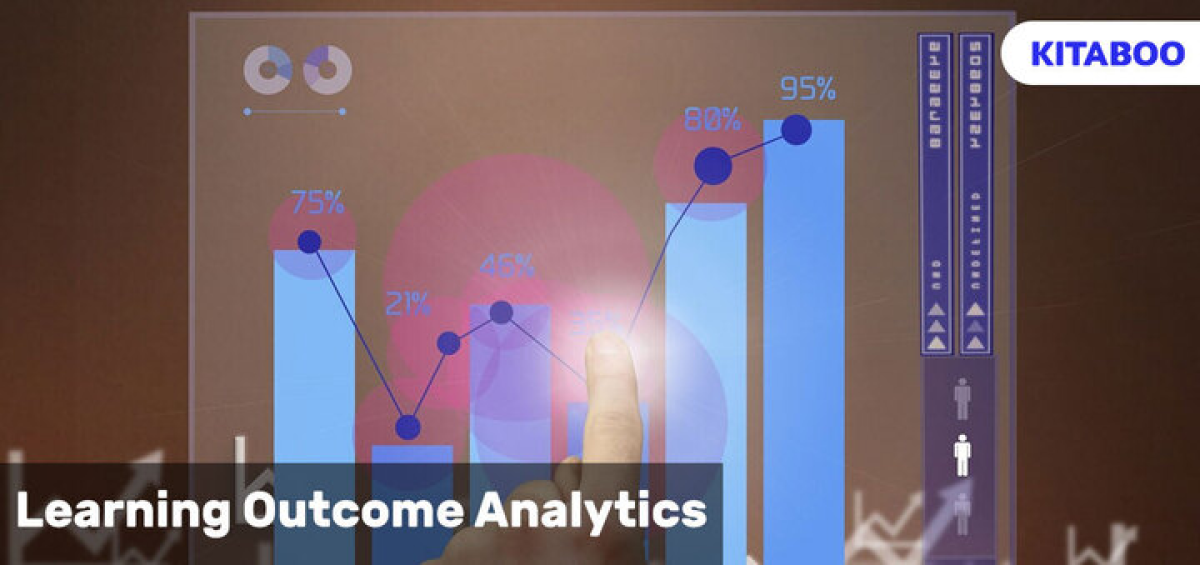Education is a powerful equalizer for students of all backgrounds to build skills, gain knowledge, and thrive professionally. However, the traditional education system has faced many challenges in developing an even playing field for all students.
The instructor-led classroom-style education delivery system comes with certain limitations and is not optimized to meet the needs of all students. For instance, it is challenging for educators to gauge students’ progress unless they conduct an exam or test.
Today, education policy worldwide is evolving, with growing importance placed on the individual performance of every student. Hence, educators need access to superior tools and frameworks to empower every student to learn effectively.
Learning outcome analytics is one such tool that enables educators to comprehend learning trends and the effectiveness of all students in-depth. Let’s understand the long-term benefits and impact of this tool and how educators can leverage it to its full potential.
Table Of Contents
I. What is Learning Outcome Analytics?
II. How Learning Outcome Analytics Supports Educators
III. 6 Benefits of Learning Outcome Analytics
- Track Every Learner’s Progress
- Gauge Individual Learner Needs
- Identify Major Problem Areas
- Reshape the Curriculum
- Predict Future Trends
IV. Access the Right Learning Outcome Analytics Tools
V. The Takeaway
What is Learning Outcome Analytics?
Learning outcome analytics refers to the automated process of collection, analysis, and reporting of in-depth data related to learners and their learning activities, consumption and engagement behaviors, and outcomes.
Learner analysis has emerged as a powerful tool. It enables educators to reshape their teaching strategies, optimize learning environments, create relevant eLearning content and curricula, and boost the learning outcomes for students.
For example, the results of a 2022 research conducted for a program of 12 weeks revealed that learning analytics-assisted recommendations and guidance feedback significantly enhanced students’ metacognitive awareness and academic achievement.
How Learning Outcome Analytics Supports Educators
The lack of real-time data has impeded educators who aim to tap the true potential of every learner rather than a few who excel. Testing and grading students a few times a year cannot accurately determine their true needs. Teachers are also unable to tell if students are adequately engaged in their studies and the areas they struggle in.
However, as more learners shift to eLearning or hybrid learning models, the usage of digital tools is changing the status quo. Not only can educators create and publish eLearning content, but they can also track learner activities and engagement on every piece of content through superior learning outcome analytics.
For instance, the digital textbook platform KITABOO not only enables the creation, publishing, and dissemination of interactive eBooks and other learning resources, but it also comes with rich learning outcome analytics.
Educators can view student engagement in real-time, their performance in assessments, and the areas they struggle with. Access to such analytics is a game-changer for educators. Let’s understand the key benefits.
6 Benefits of Learning Outcome Analytics
Here’s how learning outcome analytics is transforming educational strategy.
Track Every Learner's Progress
Traditionally, educators have focused most on the brightest and weakest students in a classroom. There was a significant amount of trial and error to drive better learning outcomes, and individualized attention was a limited opportunity.
However, access to learning outcome analytics of every student makes it possible for educators to identify a learner’s real-time proficiency and progress in the learning journey. Hence, they are better equipped to offer relevant feedback and support to every student.
Gauge Individual Learner Needs
Students have extremely diverse needs – from extra learning support to accessibility support. With access to in-depth learning outcome analytics, educators can identify a student’s specific needs and build customized learning pathways based on the data.
For instance, learners with reading challenges can be offered other formats of content, such as videos for learning, as well as support to enhance reading skills. Personalized learning paths can be transformative for a learner’s progress, and more educators are adopting this learning strategy.
Identify Major Problem Areas
AI-powered learning outcome analytics have the potential to recognize unusual patterns across massive volumes of data. Hence, educators can pinpoint common issues that affect a larger cohort of learners and tackle them at scale.
For instance, educators can proactively introduce innovative multimedia learning resources, which simplify concepts and help students master a subject they are weak in.
Reshape the Curriculum
For a long time, the learning curriculum and strategies have remained the same due to a lack of adequate data on learning effectiveness and relevance. However, learning outcome analytics has completely disrupted the status quo. Educators have the necessary data to reshape the curriculum and delivery approach to become more relevant to individual students.
Predict Future Trends
AI-driven predictive learning outcome analytics can help educators prepare adequately and in advance for learning eventualities. Predictive analysis looks at historical and current data and uses algorithms and machine learning (ML) to predict potential learning outcomes.
Predictive analytics can forecast the drop-off rates and learning engagement of specific types of learning resources accessible to students, thus playing an important role in course design. Valued at USD 10.2 billion in 2022, the global predictive analytics market is projected to grow to USD 67.86 billion by 2032.
Access the Right Learning Outcome Analytics Tools
Educators need access to the right technology to leverage high-quality learner data, which is collated, processed, and presented as ready-to-use reports.
For instance, an automated cloud-based, Artificial Intelligence (AI) driven digital textbook platform such as KITABOO is a comprehensive tool enabling educators to create, publish, and disseminate superior learning resources. Consequently, they can track learner progress through automatically generated learning outcomes analytics.
Such a tool can produce AI-generated predictive analysis, which offers insights into learning trends for any minute, day, month, and year in the future. Based on the data, educators can seamlessly create and publish new content and securely distribute it to authorized learners.
This cost-effective, efficient, and accurate tool is an asset to educators.
The Takeaway
Access to learning outcome analytics enables educators to shed more light on the performance, needs, and progress of every student. For instance, students with learning challenges can get the support they need to learn effectively and compete as per their true potential.
By using cloud-based, AI-enabled digital textbook platforms, educators have access to high-quality, in-depth learning outcome analytics, which allows them to support students and be highly effective in their teaching goals.
Education publishers and providers can leverage state-of-the-art cloud-based digital textbook platforms, such as KITABOO, to publish, distribute, market, and amplify their solutions to their audiences worldwide.
Connect with us to start a conversation.
Suggested Reads:
Discover How An Ebook Conversion, Publishing & Distribution Platform Can Help You
Kitaboo is a cloud-based content platform to create-publish & securely distribute interactive mobile-ready ebooks.
You May Also Like









